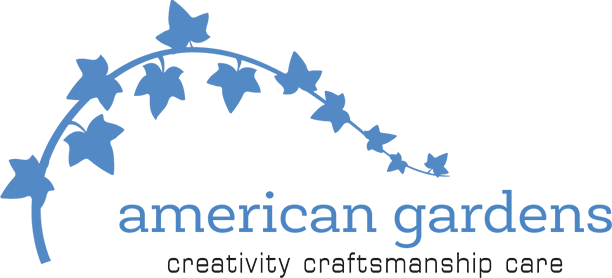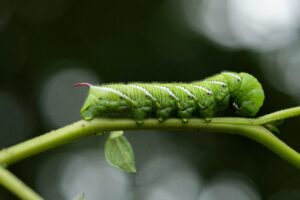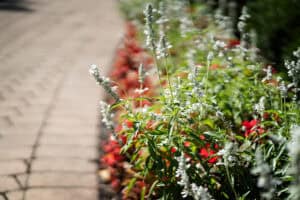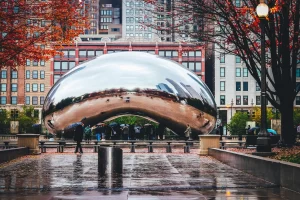National Pollinator Week is June 16–22. During National Pollinator Week, we celebrate all pollinators, like bees, butterflies, and hummingbirds. But this week isn’t just about celebration. It’s also about preservation. Pollinators’ habitats are rapidly declining—it’s why “Save the Bees” is so popular.
Your home and garden can be a beautiful habitat for pollinators. But they’re not the only ones who benefit—you do too. With more pollinators, your garden will grow healthier and better. It all starts with designing an outdoor space that benefits you and pollinators.
American Gardens believes in making outdoor spaces that are purposeful and beautiful. We help homeowners in Chicago bring natural beauty and vibrant ecosystems together.
Why Are Pollinators Important?
Designing your garden’s ecosystem to support pollinators also supports you. Depending on where you live (Chicago or elsewhere), it’s estimated that pollinators are responsible for 78%–94% of plant growth. Some have even estimated that 1 out of every 3 bites we eat comes from pollinators.
In other words, we need pollinators to make our food.
Whether you plant a flower garden or a vegetable garden, the nectar from the plants feeds the pollinators and helps them germinate other plants.
Elegant and Supportive Garden Design
A pollinator-friendly garden doesn’t mean it’s wild, overgrown, and unruly. It’s actually the opposite. With a well-designed outdoor area, your yard will combine elegance and ecology.
The best planting strategy for maximizing pollinators and beauty is to group plants in clusters. Well-designed clusters look great and are easy for pollinators to forage. Instead of planting the same flowers in one spot, you can mix and match plants (make sure they’re companion plants).

When you mix and match, you can create stunning visual patterns. Also, with so many possible pollinators in your area, a greater variety of plants will bring more to your home.
If you don’t have a lot of horizontal space, consider vertically stacking your plants.

Vertical planting maximizes your space and adds depth and beauty at all heights. Plus, it mimics a pollinator’s natural environment—woods and fields aren’t completely flat.
Planting with a Purpose in Chicago
The Midwest is a beautifully vibrant area full of native plants that pollinators love. Consider some of these trees, shrubs, flowers, vines, and crops for your garden.
| Tree | Pollinator |
|
Maple |
Bees |
|
Dogwood |
Bees, Beetles, Flies, Butterflies |
| Shrub | Pollinator |
|
Sassafras |
Flies |
|
Eastern Ninebark |
Bees, Butterflies |
| Flower | Pollinator |
|
Hairy Sunflower |
Bees, Bee Flies, Wasps, Beetles, And Butterflies |
|
Cutleaf Coneflower |
Bees, Butterflies, Beetles, Wasps |
| Vine | Pollinator |
|
Trumpet Creeper |
Hummingbirds, Bees |
|
Trumpet Honeysuckle |
Hummingbirds |
| Crop | Pollinator |
|
Blueberry |
Bees |
|
Tomatoes |
Bees |
No matter how you want your garden to look, there are plenty of options available to meet your design needs and care for pollinators. Additionally, when using native plants, they’re more likely to survive, and you improve the soil’s health.
However, due to extreme seasonal weather changes in the Midwest, it’s ideal that you rotate your garden for year-round beauty and pollination.
Caring for Plants Without Killing Pollinators
All plants require care and attention to look their best. From pruning to fertilization, the care and materials you use matter. While chemical fertilizers and foreign plants might be more affordable, they wreak havoc on your plants, soil, and pollinators.
Instead of chemical fertilizers, use organic compost (you can start a compost pile or buy fresh compost). Instead of foreign plants that might be invasive species, plant native species that grow better in the Midwest.
Do you want to turn your yard into a beautiful garden and oasis for pollinators? Contact American Gardens today to schedule a personalized consultation—and give pollinators a place to thrive in your backyard.









